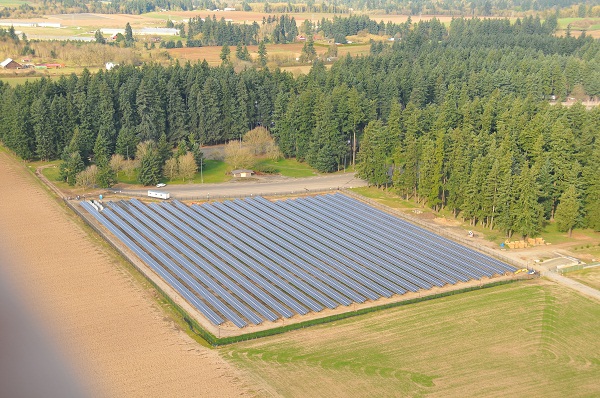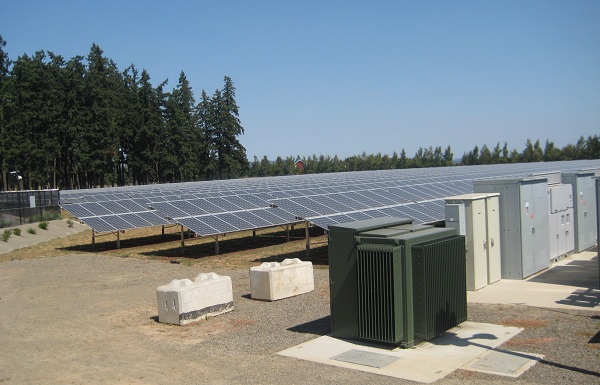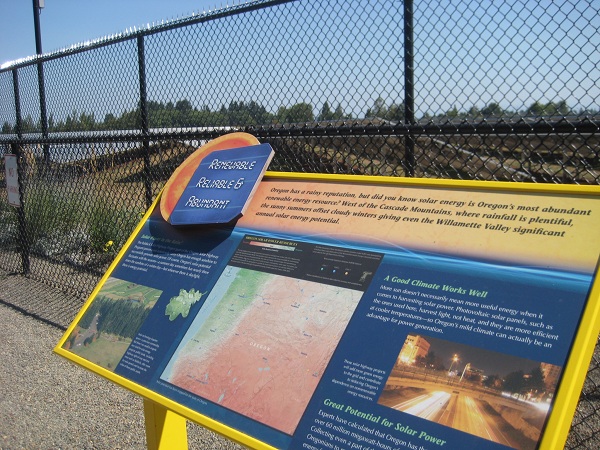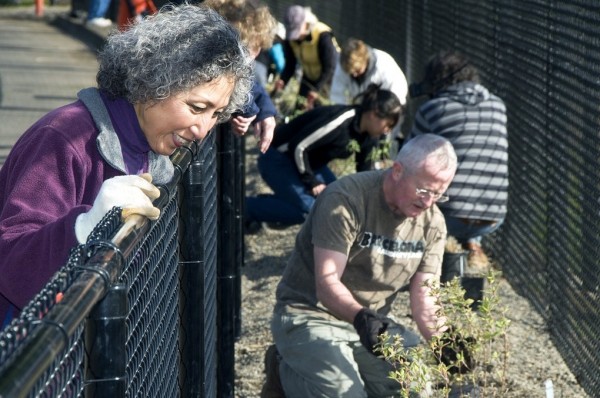Visiting the Baldock Solar Station, just off Interstate 5 about 20 miles south of Portland, I was reminded of something a friend told me earlier this summer.
He had just returned from Italy where, along the way in rural areas, he was struck by the many solar arrays dotting the countryside. These weren’t monstrosities, I gathered from what he said, but were good-sized power producers scattered amid orchards, vineyards and other crops. It wasn’t like here, he said – and this might demonstrate our West Coast point of view – where beyond urban and suburban rooftop systems we think of solar power as coming in the form of massive arrays blanketing thousands of acres in the desert.

Perhaps installations like Baldock will herald more projects that are significant but not overwhelmingly large (although, it should be noted, not everyone thinks even a 1-megawatt array in the Italian countryside is so charming). There certainly are cost advantages to producing solar power closer to where it will be used, instead of hundreds of miles away. But beyond that, there might be value to keeping our new sources of power visible, or at least not hiding them. Baldock suggested to me that built amid our everyday lives, big solar — if it’s not too big — can serve an important function beyond the power provided, reminding us that we’re all energy users, and that there are solutions.

Baldock is a 1.75 megawatt system. Its sponsors, the Oregon Department of Transportation and Portland General Electric, call it “the nation’s largest solar highway project.” But standing next to it – a sprawling, tall-tree-shaded highway rest stop on one side, a cornfield on the other — it seemed neither out of scale nor obtrusive.
The system consists of 6,994 SolarWorld 250-watt panels. A 4-kilowatt home system would have 16 panels, so there’s a lot of silicon out there at the I-5 rest stop, and the panels cover between six and seven acres.
But even that is a far cry from the 1,358 acres of ground that will be lost beneath panels at the 550-MW Topaz Solar Farm in San Luis Obispo County, Calif., now being built. It’s even a far cry from the systems that are increasingly raising hackles in New Jersey – like the 45-acre Mercer County Community College project that some nearby residents are fighting. Standing beside Baldock just the other day and imagining a panel field seven times as large made me more sympathetic than I had been to the possibility of countryside solar being too large.

The Baldock Solar Station figures to be even better integrated into the landscape when the “sustainable garden” planted around it by Oregon State University Master Gardeners fills in. An ODOT/PGE press release this week — that’s what drew me out there; the solar station actually began producing power several months ago — made this sound like something quite spectacular, but what we’re talking about is a narrow strip around the fenced, security-enhanced Baldock array. As an OSU Extension newsletter noted, “This site has many challenges. There is no source of water, it is only four feet wide and constricted between two fences. It wil have only limited maintenance; and must look attractive in every season of the year.”

It’s on its way, and it will get better, and the Baldock Solar Station will produce its nearly 2 million kilowatt-hours of electricity every year, as weary travelers and truckers wheel in and out of the rest stop, with some, I hope, taking time to give the panels a moment of consideration.
